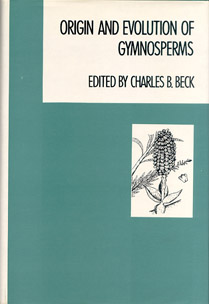 Columbia University Press, New York, USA, 1988, 504 pages, black-and-white photographs, line drawings, tables, bibliographies, index
Columbia University Press, New York, USA, 1988, 504 pages, black-and-white photographs, line drawings, tables, bibliographies, index| Contributors | ix | ||
| Preface | xi | ||
| 1. | Progymnosperms | CHARLES B. BECK AND DAVID C. WIGHT | 1 |
| 2. | Biology of Ancestral Gymnosperms | GAR W. ROTHWELL AND STEPHEN E. SCHECKLER | 85 |
| 3. | Morphology and Phylogenetic Relationships of Early Pteridosperms | JEAN GALTIER | 135 |
| 4. | Pollen and Pollen Organs of Fossil Gymnosperpns: Phylogeny and Reproductive Biology | THOMAS N. TAYLOR | 177 |
| 5. | Major Clades and Relationships in the "Higher" Gymnosperms | PETER R. CRANE | 218 |
| 6. | Cordaitales | GAR W. ROTHWELL | 273 |
| 7. | Morphology and Phylogeny of Paléozoïc Conifers | JOHANNA A. CLEMENT-WESTERHOF | 298 |
| 8. | Gymnosperms of the Angara Flora | SERGEI V. MEYEN | 338 |
| 9. | The Cheirolepidiaceae | JOAN WATSON | 382 |
| 10. | The Origin of Modern Conifer Families | CHARLES N. MILLER | 448 |
| Index | 487 |